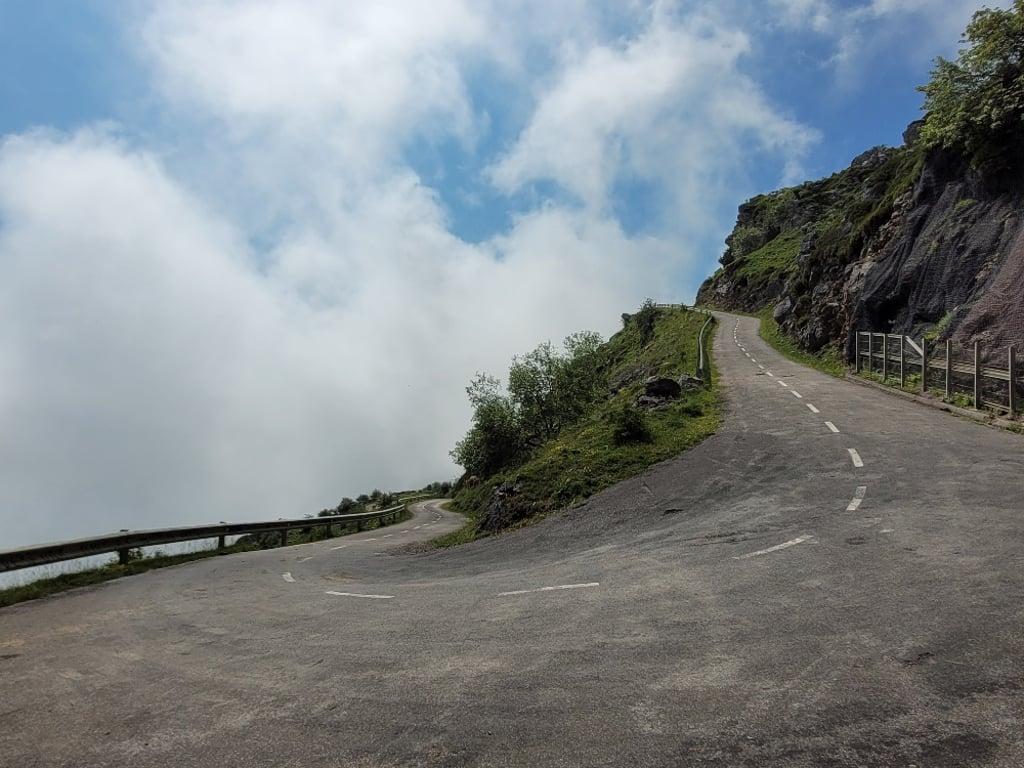Alto de l’Angliru: The Ultimate Challenge in the Vuelta a España
As the revered Vuelta a España annually captivates cycling enthusiasts worldwide, one ascent continues to stand out for its unrivaled difficulty and breathtaking beauty: the Alto de l’Angliru. Nestled in the rugged mountains of Asturias, this formidable climb has gained a notorious reputation among professional cyclists, renowned for its steep gradients and punishing switchbacks. Spanning a mere 12.2 kilometers, the Angliru features sections where the incline soars above 23%, posing a formidable challenge even for the most seasoned riders. This year, as the Vuelta once again traverses the demanding terrain, we explore the history, significance, and sheer audacity of the Alto de l’Angliru-an awe-inspiring feature that continues to test the limits of endurance and skill within the world of professional cycling.
The Challenge of Alto de l’Angliru: A Climber’s Everest in Asturias
The daunting slopes of Alto de l’Angliru have become a defining challenge for cyclists participating in the Vuelta a España, earning a reputation as one of the most feared climbs in professional cycling. Nestled in the rugged landscapes of Asturias, this notorious ascent stretches approximately 12.2 kilometers, peaking at an elevation of 1,570 meters. What sets it apart is not just the distance or the altitude, but rather its steep gradients that often reach an astonishing 23.5% in parts, making it a true test of endurance and skill. Climbers face a relentless battle against both the incline and the elements, as the weather can turn unpredictable at any moment, adding to the climb’s ferocity.
Riders tackling this ascent are often confronted with a series of hairpin turns and exposed sections that can intimidate even the most experienced cyclists. Among the key challenges of Alto de l’Angliru are:
- Exhausting Terrain: The uneven surface often features loose gravel.
- Altitude Effects: Riders can experience fatigue and difficulty breathing.
- Weather Variability: Sudden rain and fog can hinder visibility.
This combination of physical and mental obstacles transforms Alto de l’Angliru into not just a climb, but an experience that tests the aspirations of any climber looking to conquer this legendary giant of the cycling world.
| Statistic | Value |
|---|---|
| Length | 12.2 km |
| Elevation | 1,570 m |
| Maximum Gradient | 23.5% |
| Average Gradient | 10.1% |
Key Features of the Alto de l’Angliru: What Makes This Ascent Unique
The Alto de l’Angliru stands as one of the most daunting climbs in professional cycling, known for its extreme gradients and challenging terrain. Cyclists face sections with steep grades exceeding 23%, making it a true test of endurance and strength. The ascent unfolds over 12.2 kilometers, featuring varied road surfaces and unpredictable weather, frequently adding to the challenge. Riders must navigate sharp switchbacks that not only increase the difficulty of the climb but also intensify the drama of competition, as every turn presents new obstacles and opportunities for tactical maneuvers.
What further distinguishes this climb is the combination of spectacular panoramic views and its formidable reputation among professional cyclists. The route traverses the rugged landscapes of Asturias, showcasing cascading mountains and lush green valleys, immersing riders in breathtaking scenery. Additionally, the legendary status of Alto de l’Angliru is cemented by its historic role in the Vuelta a España, where it often serves as a decisive stage, amplifying rivalries and strategies. Each rider’s approach to the climb is meticulous, reflecting the nature of the race itself – a battle against not only their competitors but also against the mighty ascent that pushes the limits of human performance.
Preparing for the Ascent: Essential Tips for Cyclists Tackling Alto de l’Angliru
As cyclists prepare to face the daunting slopes of Alto de l’Angliru, understanding the unique challenges of this iconic climb is crucial. With gradients peaking at a staggering 23.6%, riders must implement a strategic approach to their training. Prioritize building endurance through long-distance rides while incorporating consistent hill repeats to simulate the climb’s intensity. Nutrition plays a vital role in ensuring peak performance, so focus on a balanced diet rich in carbohydrates, proteins, and healthy fats. Additionally, consider these essential tips:
- Gear Selection: Use a compact crankset and a wide cassette to manage steep sections effectively.
- Pacing: Start conservatively to conserve energy for the most challenging upper sections.
- Hydration: Maintain regular hydration to combat fatigue from the ascent.
The weather conditions in Asturias can be unpredictable, adding another layer of complexity to the climb. Checking forecasts before your ride and preparing for variable climates-with layers and rain gear-can make a significant difference. Riders should also engage in mental preparation, visualizing the ascent while focusing on breathing techniques to maintain composure as the leg-burning climb intensifies. To ensure readiness, consider the following:
| Preparation Aspect | Tips |
|---|---|
| Physical Conditioning | Rotate between interval training and long rides. |
| Nutrition Strategy | Experiment with energy gels and bars to find what works best for you. |
| Bike Maintenance | Ensure your bike is in top condition to handle the demands. |
To Conclude
In conclusion, Alto de l’Angliru stands as a testament to both the beauty and brutality of professional cycling. As one of the most challenging climbs featured in the Vuelta a España, it continues to test the limits of even the most seasoned riders, offering a mix of stunning landscapes and grueling gradients that push competitors to their breaking point. As we look ahead to future editions of this renowned race, the Alto de l’Angliru will undoubtedly remain a focal point of both strategy and spectacle, captivating fans and athletes alike. The climb is more than just a physical test; it is an integral part of the tapestry that defines the spirit of cycling in Asturias, cementing its place in racing lore. As the peloton tackles this awe-inspiring ascent once again, it will be fascinating to see who conquers the mountain, and who is left to contend with its unforgiving slopes.











